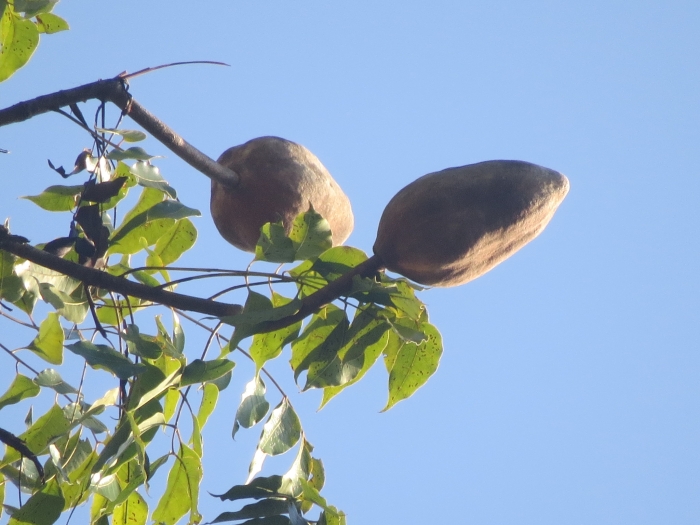Big-Leaf Mahogany
(Swietenia macrophylla)
Big-Leaf Mahogany (Swietenia macrophylla)
/
/

Francisco Emilio Roldán Velasco
CC BY 4.0
Image By:
Francisco Emilio Roldán Velasco
Recorded By:
Copyright:
CC BY 4.0
Copyright Notice:
Photo by: Francisco Emilio Roldán Velasco | License Type: CC BY 4.0 | License URL: http://creativecommons.org/licenses/by/4.0/ | Rights Holder: Francisco Emilio Roldán Velasco | Publisher: iNaturalist | Date Created: 2019-02-06T08:51:41-08:00 |

























Estimated Native Range
Summary
Swietenia macrophylla, commonly known as Big-Leaf Mahogany, is a deciduous tree native to the rainforests of Central and South America, as well as parts of Mexico. It is a slow-growing species that can reach up to 148 feet (45 meters) in height, with a straight, cylindrical trunk that can be impressively wide. The tree is characterized by its large, pinnate leaves that can be up to 20 inches long, and its small, fragrant white flowers that bloom intermittently throughout the year. The flowers are followed by distinctive, upward-growing fruit capsules that split open to release numerous winged seeds. The bark is dark grey and scaly, providing a striking contrast to the foliage.
Big-Leaf Mahogany is highly valued for its reddish-brown, straight-grained wood, which is known for its durability, resistance to rot, and workability, making it a premier material for high-quality furniture, cabinetry, musical instruments, and boat building. In cultivation, it requires a warm, humid climate with well-drained soil and full sun to partial shade. While it is not commonly grown in home gardens due to its large size, it is sometimes planted in botanical gardens and arboreta. Care should be taken as it is potentially invasive in some non-native areas, and its cultivation outside its native range should be approached with caution.CC BY-SA 4.0
Big-Leaf Mahogany is highly valued for its reddish-brown, straight-grained wood, which is known for its durability, resistance to rot, and workability, making it a premier material for high-quality furniture, cabinetry, musical instruments, and boat building. In cultivation, it requires a warm, humid climate with well-drained soil and full sun to partial shade. While it is not commonly grown in home gardens due to its large size, it is sometimes planted in botanical gardens and arboreta. Care should be taken as it is potentially invasive in some non-native areas, and its cultivation outside its native range should be approached with caution.CC BY-SA 4.0
Plant Description
- Plant Type: Tree
- Height: 33-131 feet
- Width: 33-66 feet
- Growth Rate: Moderate, Rapid
- Flower Color: Green, White, Yellow
- Flowering Season: Spring, Summer
- Leaf Retention: Evergreen
Growth Requirements
- Sun: Full Sun, Part Shade
- Water: Medium
- Drainage: Medium, Slow
Common Uses
Low Maintenance
Natural Habitat
Rainforests of Central and South America, and parts of Mexico
Other Names
Common Names: Big Leaf Mahogany, Honduran Mahogany, Caoba De Honduras, Caoba De Venezuela, Caoba Hondurena (Dominican Republic), Caoba Hondurena (Puerto Rico), Central American Mahogany, Brazilian Mahogany
Scientific Names: , Swietenia macrophylla, Swietenia belizensis, Swietenia candollei, Swietenia krukovii, Swietenia macrophylla var. marabaensis, Swietenia tesomannii, Swietenia tessmannii,
GBIF Accepted Name: